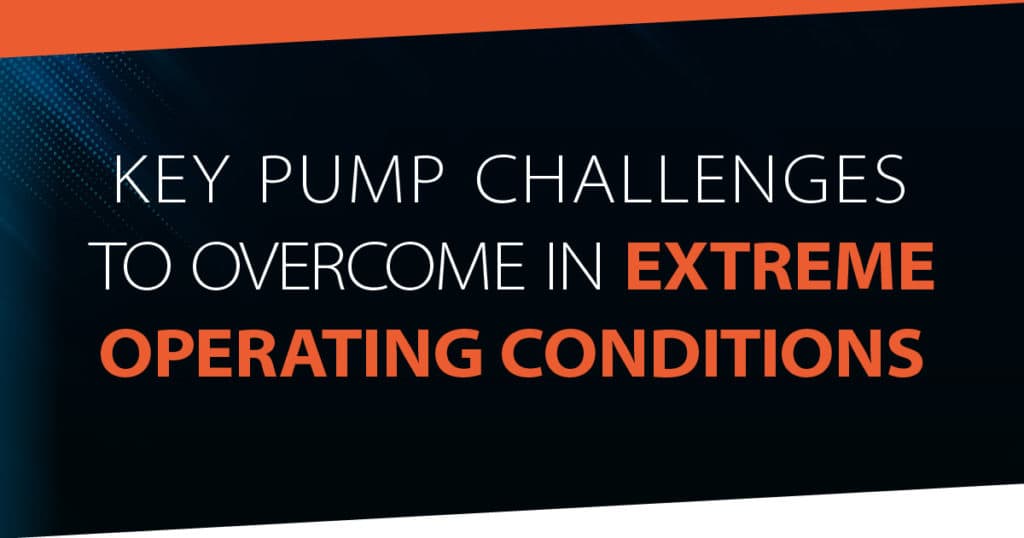Some pump applications present more challenges than others. The environment around your pump system can have extreme temperatures, humidity, or weather patterns, while the processing fluids are hazardous, corrosive, and abrasive. There’s no shortage of applications with unique operating conditions that require proper pump selection, system design, installation, monitoring, and maintenance.
Here are 6 of the key pump challenges that may need to be overcome in certain extreme operating conditions:
- Using the Wrong Equipment
Perhaps the biggest DXP Pacific sees are operators trying to adapt pump equipment for applications not designed to handle it. For example, an operator may use a standard centrifugal pump when a slurry-specific pump is required for slurries and solids-bearing materials. Or, they use cheaper parts from low-cost countries. Sure, this saves a little money up front, but it can end up costing more over time when the pump system continues to fail or underperform. Proper pump selection is critical to match the right equipment with the application.
- Inadequate Pump Materials
Pumping chemicals or other corrosive and abrasive materials often present another common problem—lack of proper materials. Pumps are available with different linings to protect the housing, impeller, and various internal parts from abrasion. Your unique application may require a specific type of lining or construction material to stand up to corrosion and prevent unnecessary wear and tear on the equipment during operation.
- Extreme Temperatures
Both external and internal factors contribute to a pump operating at temperatures that are too high or too low, hindering performance and leading to equipment failures. The pump system needs to be designed for its environment and its application. Again, it all comes down to proper pump selection and configuration. There are some extreme cases where a protective structure may be required to provide better temperature control.
- Priming
Some pumps are designed to be self-priming or have run-dry capabilities, which offers an advantage for certain applications and environments. However, it could be a detriment for specific pump systems. Suction lift is another factor to consider as it can impact pumping capacity and lead to priming issues upon starting the equipment.
- Drive Issues
Motor and drive problems may occur when external temperatures are significantly high or low. To avoid drive problems, the system should provide desired performance, resolved with more intentional pump selection and system configuration. Additionally, proper maintenance is necessary to keep the pump equipment and drive system healthy. If the pump equipment is struggling to perform optimally, it will strain the motor and vice versa.
- Poor Maintenance
Proper monitoring and maintenance will always be beneficial no matter your pump equipment, application, materials, pressures, and temperatures you are dealing with. All rotating equipment needs to be taken care of to keep it running well. To achieve this, develop a consistent maintenance plan to replace worn seals, impellers, and bearings, and learn to identify potential problems before they lead to equipment failures or breakdowns. Preventative maintenance optimizes energy efficiency, reduced downtime, and improve overall pump system performance.
These are only a few of the challenges you may be facing with extreme operating conditions caused by external temperatures or complex process materials. Talk with DXP Pacific to select the right pump system equipment for your specific application. Let us help you with everything from custom configuration and installation to maintenance and repair. Contact our team today!

